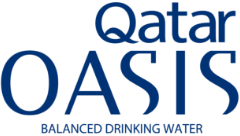Health & Fitness
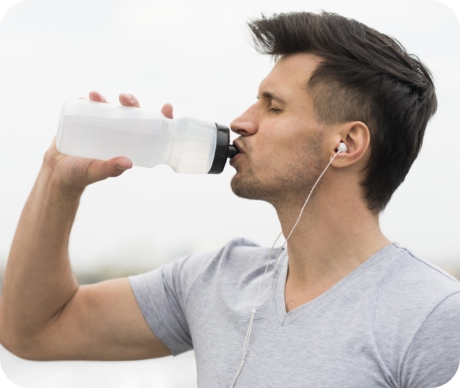 In Adulthood
In Adulthood- Reduces the risk in a range of diseases, such as coronary heart disease, stroke and type 2 diabetes. Helps maintain a healthy weight
- Helps maintain ability to perform everyday tasks with ease
- Improves self-esteem
- Reduces symptoms of depression and anxiety
 In Childhood
In Childhood- Develops motor skills and improves cognitive development
- Enhances bone and muscular development. Develops movement and co-ordination
- Improves cardiovascular health
- Supports learning of social skills
- Contributes to a healthy weight and improves self-confidence
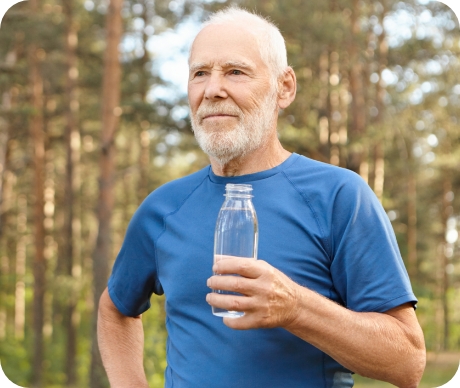 In Older Adults (Above 60)
In Older Adults (Above 60)- Helps maintain cognitive function
- Reduces cardiovascular risk
- Helps maintain ability to carry out daily living activities
- Improves mood and can improve self-esteem
- Helps maintain strength and flexibility, balance and coordination and can even help reduce the risk of falls in older adults
How Much Should I Do
Perform at least 30 minutes per day of moderate intensity activity for most days of the week. Physical activity can also he performed as a moderate intensity activity in 10 minute bouts, which counts towards the 30 minutes recommendation. This also contributes effectively to improving or maintaining an individual’s health.Children and young people (5-18 years old) are required to be active more than adults. They should engage in moderate to vigorous intensity physical activity for at least 60 minutes and up to several hours every day.
Moderate intensity physical activities is defined as activity or exercise that will cause an individual to get warmer and breathe harder and their hearts to beat faster, but they should still be able to carry on a conversation. On the other hand, vigorous intensity physical activities causes an individual to get warmer and breathe much harder and their hearts to beat rapidly, making it more difficult to carry on a conversation.
Top Tips to Get you Active
Changing a few daily habits can lead you to a more active Lifestyle. Always aim to be active as often as possible.
- Get into the habit of being active by a daily activity routine no matter how small, even if it’s only for 10 minutes
- Start small and progress at your own pace. Build up gradually towards the recommended target (at least 30 minutes)
- Always choose to walk to your local shop, or to the mosque instead of driving your car to your destinations
- Use the stairs instead of the lift or escalator, or walk up the escalator
- Try to park your car further away from the entrance to where you are going
- Avoid sitting for long periods and try to break up sitting periods every 30 minutes
The benefits of regular physical activity persist throughout…
Health and Nutrition contents are general information and not aimed or intended as physical guidance or medical prescription or nutritional advice to the readers. Consult your physician for suitable clinical directions
A healthy diet is about eating sensibly. Eat a wide variety of foods in the right proportions to achieve and maintain a healthy body weight, improve general wellbeing and reduce the risk of ailments including heart disease, stroke, some cancers, diabetes and osteoporosis. Eating well is all about balance and variety. The Qatar Healthy Plate is a guide to healthy eating which aims to encourage the consumption of a variety of foods and is made up of six food groups, each group representing a different segment.

- A healthy nutritious diet can help you look and feel your best
- Watch your intake of foods high in fat and sugar, choose low fat or reduced sugar foods where possible
- When using a spreading fat choose one that is low in saturated fat or is unsaturated
- It is fine to snack – as long as it is healthy and nutritious
-
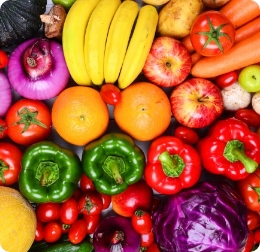 Fruits and Vegetables
Fruits and VegetablesAll kinds of fruits and vegetables are important sources of vitamins and minerals. Green leafy vegetables are good source of vitamin A and dietary fiber; whereas yellow and orange vegetables such as carrots are good sources of vitamin B and c. The antioxidant content of vegetables is a major factor in the prevention of chronic diseases. Vitamin A can be found also in mango, papaya as well as apricot and plums. These are local agricultural produce in Qatar. Vitamin c, an enhancer of iron absorption is available in citrus fruits such as oranges and lemons. Bananas and melons are rich in potassium that has been shown to reduce the risk of hypertension.
It is important to distribute the intake of vegetables among the 4 subgroups; vitamin A vegetables; vitamin C vegetables; Vitamin C vegetables; iron rich vegetables and others on a daily basis. Have at least five portions of fruit and vegetables each day.
Eat a variety of different types and colours of fruit and vegetables. This is because of different coloured fruit and veg contain their own combination of vitamins and minerals. Remember vegetables that are fresh, frozen, dried, canned, cooked and even as juices, all count towards your total five portions.
-
 Wholegrain and Potatoes
Wholegrain and PotatoesThis group is the main source of carbohydrates in the diet and should constitute between 55 to 75 percent of the total. Whole grains have many beneficial effects as they are positively associated with insulin sensitivity, better weight control management, prevention of heart diseases and certain types of cancers. They are also a major source of dietary fiber that is known to promote satiety, regulate bowel movement and reduce the risk of obesity. In addition whole grains are good source of B vitamins, minerals and folate.
Plan your meals and snacks around food group such as bread, chapattis, breakfast cereals, potatoes, rice, noodles, oats and pastas. Aim to include one food from this group at each meal.
-
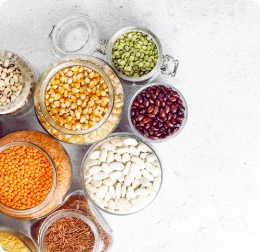 Legumes
LegumesThese are good sources of important nutrients such as magnesium, potassium, iron, folate, fiber and protein as also essential fatty acids. Legumes are rich in flavonoids, isoflavones and phytosterols. Aim to consume one small coffee cup sewing (80 grams) of legumes such as lentils, beans or chickpeas every day
-
 Meats and Alternatives
Meats and AlternativesMeats such as poultry and fish are major sources of proteins, dietary fiber and minerals. In addition fish is a major source of Omega 3 fatty acids, which has been shown to be an important factor in the prevention of hyperlipidemia, cardiovascular diseases and promotes brain development in Infants.
Meats should be eaten in moderate amounts. Choose lean cuts of meat or remove excess fat and remove the skin from chicken. Avoid frying where possible. Try to include five portions of fish each week.
-
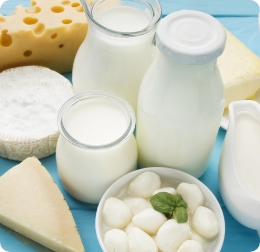 Milk and Dairy
Milk and DairyMilk and dairy products are important sources of calcium (vital for healthy bones) and protein. The fat content of whole milk and cheeses should be taken into consideration when consuming food from this group.
Choose low fat varieties of dairy products and limit the consumption of cheeses, which are helpful in controlling body fat gained from this foods.
From the stuff we drink and swim in, to the steam that eases congestion and the ice that reduces swelling, water is all around us (and even in us). Heck, it kind of is us. “Water makes up about two thirds of who we are, and influences 100 percent of the processes in our body,” says CamelBak hydration expert Doug Casa, PhD. That probably explains why we feel better when we’re drinking enough of it. To learn exactly how water is helping us, as well as some creative ways to use it, check out these 34 reasons why you should go hydrate right now.
Anyone looking to lose weight could be helped by upping their water intake. Studies have found that when participants drink water before a meal, they lose weight faster than those who did not drink water . Extra H2O helps us eat less by making us feel full, and it may also boost metabolism. CamelBak hydration advisor Kate Geagan, RD says it’s not uncommon to put on weight by mistaking thirst for hunger, and she offers this pro tip: Next time you feel fatigued or sluggish, “drinking water may be just what [you] need to perk up”
With the proper precautions, working out in the heat is usually fine-and staying hydrated is one of the most important things you can do. The hotter the workout, the sweatier we tend to get, so it’s extra important to replace those lost fluids. Determining sweat rate informs good re-hydration strategy: “Once an athlete [knows his or her] sweat rate, they can begin to practice replacing these fluid losses in training and be optimally prepared for [athletic exertion]” says Casa
Water helps us, you know, go by helping dissolve fats and soluble fiber. Drinking enough water prevents constipation and also reduces the burden on the kidneys and liver by helping to flush waste products. Geagan breaks it down: ‘In the large intestine, water binds with fiber to increase the bulk of the stools, reduce transit time and make elimination easier. When you don’t drink enough water and fluids, the colon pulls water from stools, increasing your risk of constipation’
Water is an integral part of most any workout, and it becomes especially important in order to prevent dehydration during long workouts. When exercising for an hour or more, drinking water treated with carbohydrates and salts (by mixing in tablets such as Nuun, or making a DIY version) can help maintain fluid balance, which aids athletic performance and helps prevent post-exercise fatigue and exhaustion
Research has found that the greater the fluid intake, the lower the incidence of bladder cancer, with more significant results when the fluid is water. One possible reason could be that urinating more frequently prevents the buildup of bladder carcinogens. Staying hydrated may also reduce the risk of colon cancer and breast cancer
Drinking water makes us feel so refreshed that it actually improves our state of mind. You don’t even have to be severely in need of it to benefit: Even mild dehydration has been shown to negatively impact moods
When it’s too snowy or icy to go for a run, or you want a workout that’s as fun as it is good for you, find yourself some frozen water. Try ice skating for a low-impact workout that challenges your balance, get in some hill-work while sledding, get a full-body workout while cross-country skiing, or improve your cardiovascular endurance with snow-shoeing
Going without water for too long causes headaches for some people, and has been identified as a migraine trigger . The good news is that in a study on the effects of water on headaches, participants experienced “total relief” from their headaches within 30 minutes of drinking water (two cups, on average) . Geagan says a good way to prevent headaches is to stay hydrated throughout the day. And if you’ve already been hit with a dehydration-triggered headache, you’ll need significantly more water to help it go away. She recommends drinking two to four cups of water for headache relief within one to two hours
Kidneys remove waste from our bodies, help control our blood pressure, and balance fluids, so they’re crucial to keeping our systems running smoothly. One surefire way to keep them working properly? Adequate water consumption! So drink up to keep those kidneys in tip-top shape.
Next time you’re feeling zonked, try drinking a couple glasses of water. Feeling tired is one of the first signs of dehydration and filling back up on H2O could zap the sleepiness .
Fizzy water is a staple for healthier versions of favorite boozy beverages. Using seltzer water and fresh fruit instead of sugary mixers makes for a delicious, better-for-you drink (that can also help prevent dehydration).
If you’re going to need to concentrate for long periods of time, keep water handy to help you stay refreshed, hydrated, and focused: Dehydration can impair your attention span, memory, and motor skills .
Water keeps the cartilage around our joints hydrated and supple, ensuring that our joints stay lubricated. It also protects our spinal cord and tissues, keeping us healthy from the inside out. Geagan explains that cartilage-the rubbery material that coats our bones-is about 85 percent water. To keep this protective material healthy, we need to keep hydrated.
Most of us think of those sweaty, summer workouts as the ones we should be guzzling water before, during, and after. But staying hydrated while exercising in the cold is crucial, too: One of the ways our bodies lose water is through respiration, and when we exercise in the cold, we’re working harder under the extra layers of clothing and breathing more heavily as a result. But even though we’re doubling down on fluid loss, one study found that cold weather weakens thirst. The result? We’re working hard, losing water, and not getting any body cues to drink up, which can lead to dehydration.
Researchers have concluded that when people are lonely and seeking connectedness, they spend more time in warm baths and showers, substituting physical warmth for emotional warmth . Doing so seems to ease loneliness and feelings of isolation. Warm baths may also cue oxytocin, the hormone responsible for making us feel relaxed and bonded with others. Typically released when we’re experiencing closeness to others, researchers believe that rises in body temperature can cause it to be released, too (though we should mention that this study was done on rats, not humans).
Drinking alcohol causes dehydration, which can lead to hangovers. Having a glass of water with each alcoholic drink you sip is one way to offset the dehydration (and the day-after misery).
Dehydration causes shrinkage of brain tissue. So when we haven’t been drinking enough water, our brains have to work a lot harder to perform at the same level . One study even found that students who brought water to tests did better on their exams.
Whether you need to clean your home, clothes, dishes, laundry, or yourself, water is the basic ingredient in many all-natural cleaning products. These products have all the cleansing punch with none of the toxicity, which is better for homes, health, and the environment.
A study that followed 400 participants during cold and flu season found that those who gargled water regularly were significantly less likely to contact upper respiratory infections and that when they did, their symptoms weren’t as severe . (Maybe it’s time to supplement that flu shot with funny throat noises!).
Water-rich fruits and vegetables like cucumber, watermelon, and strawberries contain minerals, salts, and natural sugars the body needs for optimum hydration levels, so eating them can sometimes rehydrate us more effectively (and a lot more tastily) than water alone.
Deep water running and water aerobics offer cardio workouts without the impact. For cross training that’s no-impact and low-stress, hit the pool. Then there’s aqua spinning, which has been growing in popularity for a reason: It provides a workout as effective as cycling on land, and might even offer increased cardiovascular benefits.
One study showed that good health is more prevalent the closer one lives to the coast . Whether it’s the proximity to sea air, greenery, or opportunities to soak up sunshine on the beach, spending time near the water makes us healthier.
About 60 percent of the human body is made of water, and keeping our fluids balanced means that all that water is doing its job-transporting nutrients, aiding digestion, regulating temperature, and so on.
Exposure to unpleasant noises (screams, scrapes, electric drills, subway trains, perhaps?) can elevate our pulse and blood pressure and cause stress hormones to be released . In contrast, in one study, participants rated bubbling water as the most pleasing sound they were asked to listen to. The sounds of water flowing has also been found to have therapeutic effects.
Swimming has been found to improve long-term physical and mental health and is a great option for anyone who wants an impact-free cardio workout. Those seeking peace of mind might consider diving in too; spending time in the pool is believed to reduce depression.
Ice has been shown to be an effective short-term therapy for sprains and strains. Cold packs reduce blood flow and swelling in the affected area and also treat pain.
Studies show that immersion in cold water is beneficial for sustained athletic performance in the heat, and for treating muscle damage after exercise . On hot days, immersion in cold water can keep body temperatures level and blood flowing.
Can drinking water keep us heart healthy? There seems to be a link between risk of death from coronary heart disease and water intake: Research has shown both that consuming more water means a lower risk of death from coronary heart disease and that risk of death rises when intake of “high-energy fluids” (like soda and juice) increases .
One small study found that adults with sleeping problems experienced better sleep and less wakefulness on nights they received a warm water foot bath before going to bed.
Perhaps there’s a therapeutic reason that waterbeds were all the rage in the ’70s and ’80s. Research indicates that waterbed mattresses are associated with improving back pain symptoms and providing a good night’s sleep (though the benefits were small).
Stuffy nose got you down? Inhaling steam from a humidifier or pot of boiling water can help clear up congestion. Salt water can also break up all the gunk that makes us stuffy: Stream it from one nostril to the other with a neti pot or try a saline nose spray to loosen things up.
If you suffer from chronic pain, a hot-water soak could help. A review of spa therapy (soaking in baths of hot water or mineral water) showed that it has been an effective treatment for pain and rheumatic disorders.
Okay, so snow’s not exactly water, but it’s definitely similar enough! If you’ve ever spent time shoveling after a snowstorm and felt like you got a darn good workout, it’s because you did. In fact, shoveling snow makes demands on the body similar to a treadmill workout at maximum effort . As long as you’re already in good cardiovascular health, grab a snow shovel the next time heavy snowfall sidetracks your workout plans! (To avoid injury and strain: Warm up first and use proper shoveling technique—snow shoveling is hard work and can cause injury!).
Relaxing in a sauna could be as healthy as it is calming. In one small study, participants who sat in a sauna for 15 minutes every day for three weeks showed improved heart function and blood pumping capabilities, and were able to exercise more. Researchers concluded that sauna therapy could be an effective complement or alternative treatment for some people with chronic heart failure.
